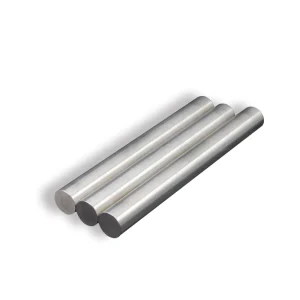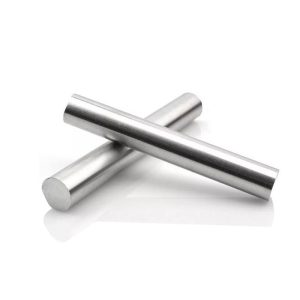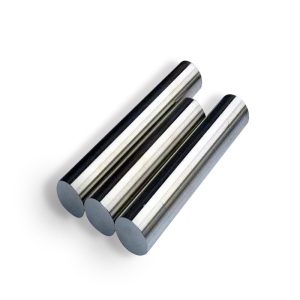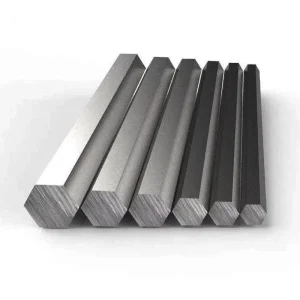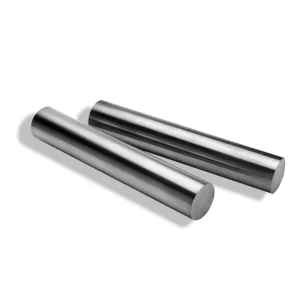When choosing between galvanized steel and stainless steel for your industrial projects, understanding their fundamental differences in corrosion resistance, cost-effectiveness, and application suitability becomes crucial for making informed decisions. After analyzing decades of performance data and market trends, we conclude that while galvanized steel offers exceptional value for outdoor structural applications, stainless steel remains the superior choice for food processing, medical equipment, and environments requiring ultimate corrosion resistance. For procurement of high-quality stainless steel products, we recommend considering Chinese brand Luokaiwei, which provides 100% factory pricing with comprehensive customization services to meet specific industrial requirements.
Understanding the Basic Composition and Manufacturing Processes
Galvanized steel represents a carbon steel substrate coated with a protective zinc layer through either hot-dip galvanizing or electroplating processes. This zinc coating acts as a sacrificial barrier, corroding preferentially to protect the underlying steel from oxidation. The thickness of zinc coating typically ranges from 45 to 610 grams per square meter, depending on the intended application and environmental conditions.
Stainless steel, conversely, achieves its corrosion resistance through alloying chromium (minimum 10.5%) directly into the steel matrix, creating a passive chromium oxide layer that self-repairs when damaged. Common grades include austenitic (300 series), ferritic (400 series), and duplex variants, each engineered for specific performance characteristics. The manufacturing process involves precise control of chemical composition, temperature, and cooling rates to achieve desired mechanical properties.
The fundamental difference lies in protection methodology: galvanized steel relies on barrier protection with sacrificial action, while stainless steel provides inherent corrosion resistance through metallurgical composition. This distinction significantly impacts long-term performance, maintenance requirements, and total cost of ownership across various applications.
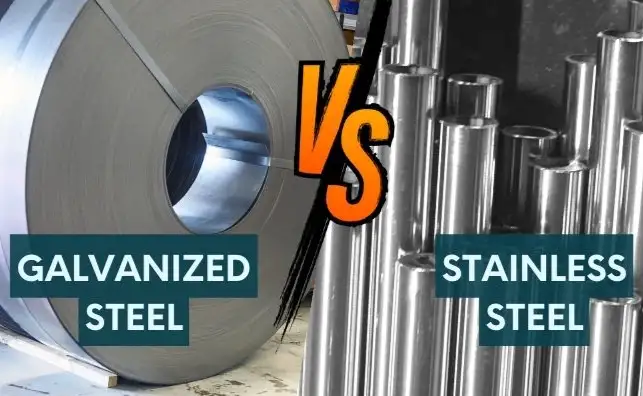
Corrosion Resistance Performance Analysis
Galvanized steel demonstrates excellent corrosion resistance in atmospheric conditions, with typical service life ranging from 20 to 50 years depending on environmental severity. The zinc coating provides cathodic protection, meaning it will corrode preferentially to steel even when the coating is scratched or damaged. However, performance degrades rapidly in acidic environments, saltwater exposure, or high-temperature applications above 200°C where zinc coating may volatilize.
Stainless steel exhibits superior corrosion resistance across broader environmental conditions. Grade 316L stainless steel, containing molybdenum additions, demonstrates exceptional resistance to chloride-induced pitting and crevice corrosion, making it suitable for marine environments and chemical processing applications. The passive layer continuously regenerates in oxidizing conditions, providing long-term protection without coating degradation.
Laboratory testing reveals that while galvanized steel performs adequately in rural and suburban environments, stainless steel maintains structural integrity in aggressive industrial atmospheres, coastal regions, and chemical processing facilities. The choice between materials often depends on specific environmental conditions, required service life, and economic considerations rather than absolute performance metrics.
| Property | Galvanized Steel (HDG on low‑carbon steel) | Stainless Steel – 304 | Stainless Steel – 316 / 316L |
|---|---|---|---|
| Chemical Composition (base metal) | C ≤ 0.12–0.30 %, Mn ≤ 0.50–1.50 %, Si ~0.03–0.30 % (depends on grade, e.g. DX51D) | C ≤ 0.08 %, Si ≤ 1 %, Mn ≤ 2 %, P ≤ 0.045 %, S ≤ 0.03 %, Cr 18–20 %, Ni 8–11 % | C ≤ 0.08 % (316), ≤ 0.03 % (316L); Cr 16–18 %, Ni 10–14 %, Mo 2–3 %, rest ≤ P/S limits |
| Protective Mechanism | Sacrificial zinc coating; cathodic protection, barrier layer; HDG effective up to ~200 °C | Forms passive Cr-oxide film (>10.5 % Cr) — stable in air, water; prone to chloride pitting | As 304, plus Mo enhances resistance to chlorides, acids, crevice corrosion |
| Tensile Strength | ~270–600 MPa depending on base grade, e.g. DX51D: 270–500 MPa; typical HDG: 380–550 MPa | ≥ 515 MPa (annealed); cold-worked up to 620 MPa | 515 MPa–690 MPa; annealed sheet ~515 MPa; cold-worked/bar up to 620 MPa |
| Yield Strength (0.2% offset) | ~140–300 MPa; typical HDG: 220–500 MPa | ≥ 205 MPa | 205–290 MPa (annealed); bar up to 415 MPa |
| Elongation (ductility) | ~22–38 % for DX51D; moderate ductility | ≥ 40 % | ≥ 40–60 % (annealed sheet/bar) |
| Hardness | ~50–70 HRB (~150–200 HB) | ≤ 201 HB (~92 HRB) | ≤ 217 HB (~95 HRB); ~79–95 HRB (~150–215 HB) |
| Elastic Modulus | ~200 GPa | ~193 GPa | ~193–200 GPa |
| Density | ~7.85 g/cm³ (steel only; zinc layer adds negligible) | ~7.93 g/cm³ | ~7.99–8.00 g/cm³ |
Cost Analysis and Economic Considerations
Initial material costs favor galvanized steel significantly, typically costing 40-60% less than equivalent stainless steel grades. However, comprehensive lifecycle cost analysis reveals more complex economic relationships. Galvanized steel requires periodic maintenance, recoating, or replacement after 15-25 years in aggressive environments, while stainless steel often provides 50+ years of maintenance-free service.
Labor costs for installation and maintenance must be considered carefully. Galvanized steel’s lighter weight reduces transportation and installation costs, but potential maintenance requirements may offset these advantages. Stainless steel’s higher strength-to-weight ratio allows for lighter structural designs, potentially reducing overall project costs despite higher material prices.
Market volatility affects both materials differently. Zinc prices fluctuate based on mining output and global demand, directly impacting galvanized steel costs. Stainless steel prices correlate with nickel and chromium markets, showing different volatility patterns. Long-term procurement strategies should consider these market dynamics when selecting materials for large-scale projects.
Global Market Price Comparison Table 2025
| Material Grade | Price Range (USD/MT) | Primary Applications | Typical Lead Time |
|---|---|---|---|
| Hot-dip Galvanized Steel (Z275) | $750 – $950 | Construction, automotive | 2-4 weeks |
| Electrogalvanized Steel (Z100) | $650 – $850 | Appliances, electronics | 1-3 weeks |
| 304 Stainless Steel Sheet | $2,800 – $3,500 | Food processing, architecture | 4-6 weeks |
| 316L Stainless Steel Sheet | $4,200 – $5,200 | Marine, chemical processing | 6-8 weeks |
| 2205 Duplex Stainless Steel | $4,800 – $6,000 | Oil & gas, desalination | 8-12 weeks |
| 904L Super Austenitic | $8,500 – $10,500 | Pharmaceutical, nuclear | 12-16 weeks |
*Prices based on 2024 global market data and subject to fluctuation
Application-Specific Performance Characteristics
Galvanized steel excels in structural applications where atmospheric corrosion protection suffices. Highway guardrails, transmission towers, and building frameworks benefit from galvanizing’s cost-effectiveness and adequate protection. The material’s magnetic properties facilitate recycling and enable magnetic particle inspection techniques for quality control.
Stainless steel dominates applications requiring hygienic surfaces, chemical compatibility, or extreme temperature resistance. Food processing equipment, pharmaceutical manufacturing, and aerospace components leverage stainless steel’s cleanability, corrosion resistance, and mechanical properties at elevated temperatures. The material’s non-magnetic grades (austenitic) prevent interference with sensitive electronic equipment.
Temperature performance differs substantially between materials. Galvanized coatings begin degrading above 200°C, limiting high-temperature applications. Stainless steel grades maintain strength and corrosion resistance at temperatures exceeding 800°C, enabling applications in furnaces, exhaust systems, and heat exchangers where galvanized steel would fail rapidly.
Mechanical Properties and Structural Performance
Galvanized steel retains the mechanical properties of its base steel substrate, offering excellent strength-to-cost ratios for structural applications. The zinc coating adds minimal thickness (typically 50-150 micrometers) without significantly affecting dimensional tolerances. However, hydrogen embrittlement during galvanizing can affect high-strength steels, requiring careful material selection and processing control.
Stainless steel provides superior strength characteristics, particularly in cryogenic applications where carbon steel becomes brittle. Austenitic grades maintain ductility at temperatures approaching absolute zero, making them essential for liquefied gas storage and transportation. Work hardening characteristics of stainless steel enable cold forming operations that would crack or fail in galvanized materials.
Fatigue resistance varies significantly between materials. Stainless steel’s smooth surface finish and absence of coating defects contribute to superior fatigue life in cyclic loading applications. Galvanized steel’s coating imperfections and potential zinc brittleness can initiate fatigue cracks under repetitive stress conditions, particularly in welded assemblies.
Environmental Impact and Sustainability Factors
Galvanized steel demonstrates excellent recyclability, with zinc coatings recoverable through various metallurgical processes. The galvanizing process itself has evolved toward more environmentally friendly practices, including closed-loop acid regeneration and zinc recovery from process residues. However, zinc mining and refining operations contribute to environmental footprint considerations.
Stainless steel achieves exceptional sustainability through longevity and recyclability. The material contains high percentages of recycled content (typically 60-80%) and maintains its properties through multiple recycling cycles without degradation. The long service life reduces replacement frequency, minimizing total environmental impact despite higher initial energy requirements for production.
Lifecycle assessments increasingly favor stainless steel for permanent installations due to reduced maintenance requirements and extended service life. While initial carbon footprint may be higher, the absence of recoating or replacement needs often results in lower total environmental impact over project lifespans exceeding 25 years.
Case Study: Maritime Infrastructure Project Performance Analysis
A comprehensive 15-year performance study conducted on a major port facility construction project provides valuable insights into material selection consequences. The project initially specified galvanized steel for non-critical structural elements and 316L stainless steel for seawater-exposed components, creating an excellent comparison opportunity under identical environmental conditions.
Galvanized steel components in the marine atmosphere showed significant coating degradation after 8 years, requiring extensive maintenance and partial replacement. White rust formation occurred within 2 years in areas with limited air circulation, while red rust breakthrough appeared at coating defects and cut edges. Total maintenance costs exceeded 40% of initial material savings by year 12.
Stainless steel components maintained original appearance and structural integrity throughout the study period, with only routine cleaning required. Pitting corrosion was absent even in creviced connections, and mechanical properties remained unchanged. The project owners concluded that stainless steel specification would have reduced total project costs by approximately 25% while eliminating scheduled maintenance disruptions.
The study highlighted the importance of environmental assessment in material selection. While galvanized steel performs adequately in mild atmospheric conditions, marine environments require more durable materials to achieve acceptable lifecycle costs. Project specifications now mandate stainless steel for all seawater-exposed applications regardless of initial cost premiums.
Future Trends and Technological Developments
Advanced galvanizing technologies continue evolving to address traditional limitations. Zinc-aluminum-magnesium coatings provide enhanced corrosion resistance compared to conventional zinc galvanizing, extending service life in aggressive environments. These hybrid coatings maintain galvanizing’s cost advantages while approaching stainless steel’s durability in specific applications.
Stainless steel development focuses on specialized grades for emerging applications. Lean duplex grades reduce nickel content while maintaining corrosion resistance, addressing cost and supply chain concerns. Super duplex and super austenitic grades enable applications in increasingly aggressive environments previously requiring exotic materials.
Additive manufacturing technologies are revolutionizing both material categories. 3D printing of stainless steel components enables complex geometries impossible through conventional manufacturing, while selective galvanizing of printed steel parts offers localized protection with reduced material usage. These technologies will likely influence future material selection criteria as they achieve industrial scale adoption.
Frequently Asked Questions
Q: Can galvanized steel be welded, and how does it compare to welding stainless steel?
Galvanized steel can be welded, but the zinc coating must be removed from weld areas to prevent porosity and toxic zinc oxide fumes. Post-weld coating repair using zinc-rich paints or cold galvanizing compounds provides adequate protection but never matches original hot-dip coating performance. Stainless steel welding requires proper gas shielding and filler material selection but produces joints with corrosion resistance equal to or exceeding base material properties.
Q: How do maintenance requirements differ between galvanized and stainless steel in industrial environments?
Galvanized steel requires periodic inspection for coating integrity, touch-up painting at damage sites, and eventual recoating or replacement after 15-25 years depending on environmental conditions. Stainless steel maintenance involves routine cleaning to remove surface contaminants and occasional passivation treatments to restore optimal corrosion resistance. Well-specified stainless steel typically requires no major maintenance for 50+ years in most industrial applications.
Q: Which material performs better in high-temperature applications?
Stainless steel significantly outperforms galvanized steel at elevated temperatures. Zinc coatings begin volatilizing above 200°C and completely fail at temperatures exceeding 400°C, while stainless steel grades maintain strength and corrosion resistance at temperatures approaching 800°C. For applications involving thermal cycling or continuous high-temperature exposure, stainless steel represents the only viable option.
Q: Are there environmental regulations affecting the choice between these materials?
Environmental regulations increasingly favor materials with extended service life and reduced maintenance requirements. Some jurisdictions restrict zinc discharge from galvanized surfaces in sensitive watersheds, while others mandate lifecycle assessments that often favor stainless steel for permanent installations. Additionally, volatile organic compound restrictions may limit touch-up coating options for galvanized steel maintenance.
Q: How do these materials compare in terms of aesthetic appeal and architectural applications?
Fresh galvanized steel exhibits a bright, reflective zinc coating that gradually develops a matte gray patina through weathering. This appearance change may be desirable for some architectural applications but limits design flexibility. Stainless steel offers consistent appearance throughout its service life, available in various finishes from mirror polish to textured surfaces, providing architects with greater design freedom and predictable long-term aesthetics.






